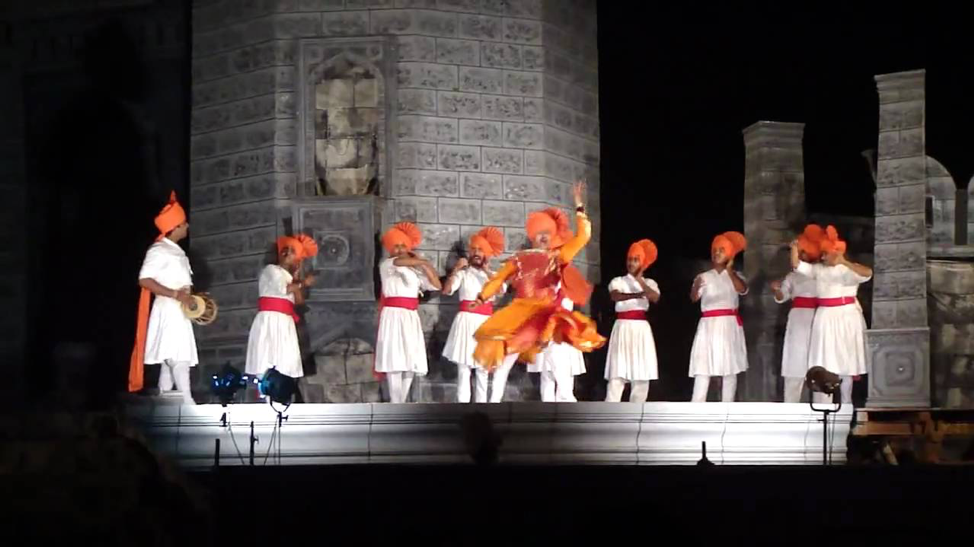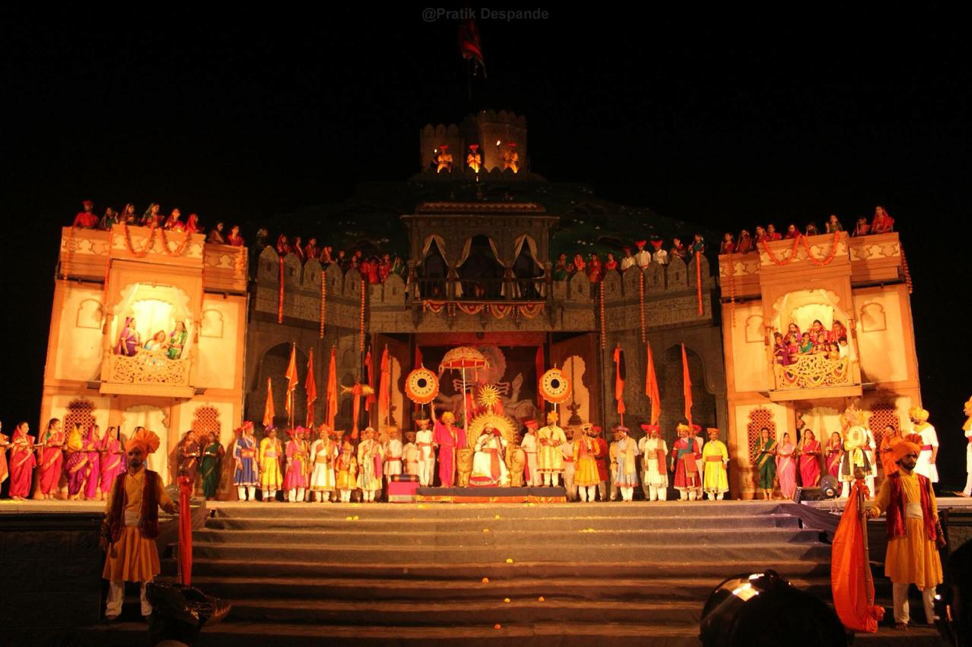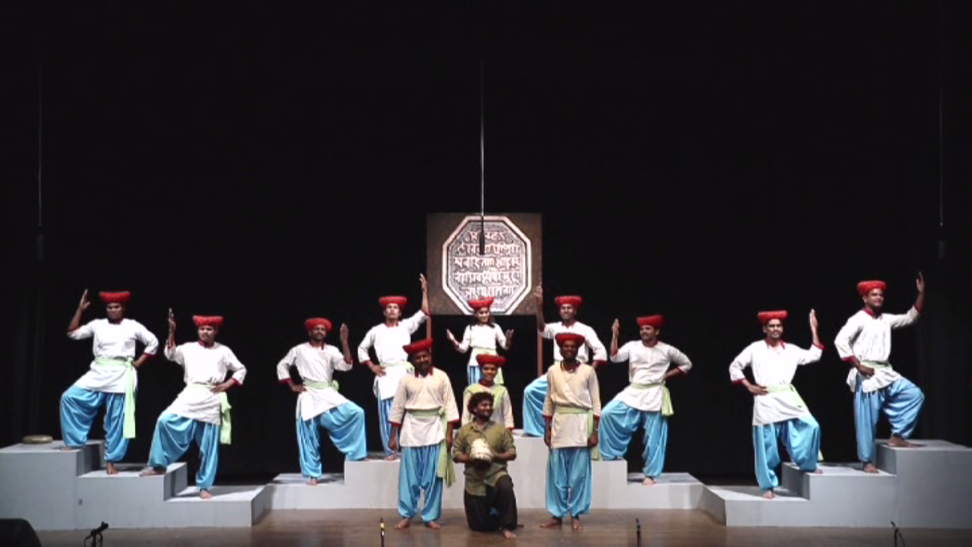Chhatrapati Shivaji Raje Bhosale, the seventeenth-century king who founded the Maratha Empire, is invoked by Maharashtrians with the words ‘राजे तुम्ही परत या’(Raje, please come back).
For societies to perpetuate, they require a past to thrive on. Historical figures—for example, Greece’s Alexander, France’s Louis XIV or India’s Shivaji Maharaj—are essential to any society. They transform into canonical icons and are woven into the fabrics of culture, collective and public memories through family histories, statues, traditional and popular theatrical plays and performances, and now even films and television serials.
Shivaji as a ruler is celebrated, especially in Maharashtra, as charismatic, just and noble. Though the Maratha Empire was dominant in western and central India in the seventeenth and eighteenth centuries, the nationalist movement from Maharashtra after the nineteenth century attempted to transform Shivaji into a national hero. The impetus lay in appropriating him as a torchbearer of Hindavi swarajya[1] (self-rule of Indian people) before British colonisers took hold of India. However, there were also other narratives spun around him; writer, social activist and anti-caste reformer Mahatma Jyotirao Phule celebrated Shivaji as the king of commoners. Such varied historical narratives in the form of plays and performances and fictional novels are part of popular culture.
The complex history of India from the Middle Ages until British colonial rule further contributed to the various imaginings of Shivaji—for in that cluster of centuries, the Indian subcontinent was fragmented and ruled by various sultans, nawabs, rajas and maharajas. Regionalisation led to the decline of the Mughal Empire after the death of Aurangzeb, and the local upper caste and class bankers made circumstances favourable for British colonisers, who were initially interested only in trade. During the reign of the Marathas, the power structure changed and de facto power was bestowed upon the Peshwas, who were mostly Brahmins by caste in contrast with the monarchy of Shivaji and his lineage (Shivaji’s caste is a debated issue: some claim that he was a Shudra king while others claim he was a Rajput).
With the Peshwas in power by the eighteenth century, caste hierarchies became even more rigid and the ‘just rule’ of Shivaji’s reign, a nostalgia. The Third Battle of Panipat, fought between the Maratha Empire and the Afghan king Ahmad Shah Abdali and his allies in 1761, paved the way for the British to take over administration in the Indian subcontinent. Jyotirao Phule, in the preface of his text Gulamgiri,[2] writes about the drawbacks of the British government’s policy on higher education and exposes the Brahmin monopoly in all strands of the society. He explains that though the British policy of universal education appeared on the surface to be egalitarian, their choices and ethnographic practices reinstated caste hierarchies. Phule writes:
Perhaps the most glaring tendency of the Government system of high class education has been the virtual monopoly of all the higher offices under them by the Brahmins. If the welfare of the Ryot is at heart, if it is the duty of Government to check a host of abuses, it behoves them to narrow this monopoly, day by day, so as to allow a sprinkling of the other castes to get into the public service. Perhaps some might be inclined to say that it is not feasible in the present state of education. Our only reply is that if Government look a little less after higher education and more towards the education of the masses, the former being able to take care of itself, there would be no difficulty in training up a body of men every way qualified and perhaps far better in morals and manners.[3]
Before the British brought to India the scientific and ‘rational’ education of the West, history writing was a form of storytelling with mystical interventions as in the case of bakhar (a form of Marathi historical narratives and memoirs). Prachi Deshpande, in her remarkable work Creative Pasts, recounts the layout of the bakhar-writing tradition of the seventeenth century.[4] She points out different narrative strategies adopted by the kings and their courtiers to project a certain image while being entirely conscious that it would be remembered as history. She stresses the role of scribes—mostly Brahmins—in the Maratha courts and their politics of narrativisation—including popular-culture beliefs, myths of Goddess Bhavani, importance of the scribes’ role in ruling, and rejection of the Muslim conventions of writing interspersed with the historical facts and evidences. Similarly, Stewart Gordon unambiguously draws onto the historiography of the Marathas from the 1600s to the present.[5]
Bakhars treat Shivaji as a deific figure inspired by goddess Bhavani. This approach is also exemplified in the SSC board history textbooks in Maharashtra. For example, the class four history textbook is completely dedicated to Shivaji and the saints during his time, albeit without any sociopolitical meanings. An entire chapter is dedicated to Shivaji’s childhood friends and his oath-taking, and most of the textbook focusses on his heroic deeds rather than concrete historical events. Such narratives from the ‘rational’ as well as the archaic sources enter into the realm of popular culture through performative mediums such as plays and performances.
Powada is one of the oldest traditional forms of ballad singing from Maharashtra where stories of great warriors are narrated, enacted and sung. It comprises a chorus, with the leader, called the shahir (from Arabic shayar, meaning poet), narrating the story in verse and singing. (Fig. 1) The chorus repeats the lines from the song with a leitmotif of ‘jeejeejeejee’. Along with lavani and tamasha, powada is employed in popular culture, especially in rural Maharashtra. Deshpande writes in her book Creative Pasts that powadas adapted from the bakhars and vice-versa. Of late, bakhars have been adapted into plays and films usually based on Shivaji.

Sayajirao Gaikwad, a scholar from Shivaji University, Kolhapur, traces the etymology of the word ‘powada’ and offers various interpretations. He suggests that it might have come from the Kannada pawad, which means miracle or superhuman action, but settles on the Sanskrit etymology of pravada, which means ‘to tell’.[6]
Powada as a narrative storytelling form is seen to be interspersed with references to local gods and goddesses to make it familiar and magical for the audience, as it is a part of the everyday culture as opposed to the elite court cultures of the past.[7] Take, for example, this powada by Shahir Pirajirao Sarnaik from Kolhapur:
कोणी मानीत नाही कोणाला
देवादिकांची, देश, धर्माला
जुलुम जबरदस्ती अन्यायफार
असा भूमीवर वाढता भार
देवाला घ्यावा लागतो अवतार . . .जी जी जी
या न्यायाने शहाजीराजे व जिजाईचे पोटी शीव-अवतार झालाNobody is respected
Not the gods, not the nation, not religion
Atrocities and injustice is abundant
This way the earth is getting heavier
The gods are then forced to incarnate . . .
Due to this justice of the Gods, ShahajiRaje and Jijabai[Shivaji’s parents] gave birth to the incarnation of Shiva
Shivaji’s birth has clearly been mythologised as the incarnation of Lord Shiva to appeal to the audience. Similar narratives can be seen in the spectacular play Janata Raja (The Knowing King) which has been performed in Marathi since 1985. The three-hour mega play—written and directed by noted author, orator, Maratha history scholar and Padma Vibhushan awardee Balwant Moreshwar Purandare, also known as Shivshahir (Shivaji’s poet)—has staged over a thousand shows in India and abroad. Translated into Hindi as Raja Shiv Chhatrapati, the play propagates Shivacharitra (the life of Shivaji) throughout the country. At the age of 96, Purandare continues to work towards propagating Shivcharitra to younger generations.
Purandare founded the Maharaja Shivchhatrapati Pratisthan, under the leadership of Rajmata Late Sumitra RajeBhosle on April 7, 1967. Among many other activities, it produces and manages shows of Janata Raja. (Fig. 2)

Janata Raja requires—unlike theatre performances in auditoriums—a huge open ground to accommodate a huge automated stage, 250 artists, animals, fire shows and thousands of spectators. (Fig. 3) The play is a depiction of the life of Shivaji, with dances and songs, animals and fire on stage. As the name of the play suggests, various facets of Shivaji’s character—not only as a king, but also as an individual—are depicted, with multiple scenes from his life.

The mahanatya (mega play) was one of its kind, with its massive stage and plenty of actors. Later, mahanatyas based on the lives of Saint Dnyaneshwar, Krishna, Chhatrapati Sambhaji, etc., were experimented with but none saw the success Janata Raja sees.
The play uses the folk art forms of Maharashtra, predominantly the tamasha where actors narrate stories through songs and dances, especially lavani (a popular music genre in Maharashtra). The play unfolds with the shahir and his phad (chorus group) narrating to the spectator on one hand and the actors demonstrating on the other. The play begins with a powada, where the shahir seeks Lord Ganesha’s blessings. Like the powada and mythological narratives, the play also calls Jijabai, Shivaji’s mother, the incarnation of Goddess Bhavani (dialogue quoted from the play: ‘And the Bhavani of Maharashtra appeared before us as Jijabai’).[8] In another instance, an actor playing the character of a young Shivaji says to his friends, ‘We are the sons of Goddess Tulja Bhavani’, and then turns to the huge sculpture of Bhavani at the centre of the stage and invokes her to grace the gondhal (a dramatic narration of mythological stories in praise of a hero). Poetry and dramatic art go hand in hand; metaphors and mythologies are pleasurable to the ears and heart and their aesthetics cannot resist creating political efficacy.
Shivaji Underground in Bhimnagar Muhalla is a more recent Marathi play, produced by Rang Mala, a theatre group comprising mostly farmers belonging to the small district of Jalna in Maharashtra. The play was written by Rajkumar Tangde, a member of the group, and directed by actor–director Nandu Madhav. It breaks the traditionally mystical and exaggerated hagiography of Shivaji and draws attention to his ideas of rule and justice through a Dalit perspective rather than making him a hero of a specific clan, caste or religion. It critiques the use of Shivaji’s image by political parties to push for their agenda and lure the masses. The writer of the play, in a telephonic interview, said that the play received several threats from dominant regional parties when it was performed in May 2013 for the first time in Maharashtra.
Shivaji Underground uses satire and comedy and a normal proscenium stage as its apparatus. It starts with mythical characters of Indra and Yama. Yama is sent to the earth to find Shivaji and bring him, along with his ideas, to heaven. However, when he meets Shivaji, he is tricked by the king who flees, leaving behind his turban as security and a promise to be back. Yama waits and eventually embarks on a journey to earth to find Shivaji. During the journey, he sees a lot of political campaigns which use Shivaji’s image to their benefit. He finally reaches Bhimnagar Muhalla—a Dalit and Muslim dominated neighbourhood—in a small village, where people actually strive to understand Shivaji as a warrior king and not the incarnation of any god.
Powada is employed as a narrative form in this play as well, but one sees a version of Shivaji who is secular and a great administrator. At the end of the play, Yama is unable to find Shivaji and offers the turban to the audience as a symbolic gesture, with the message: ‘May the turban fit all the heads and all the heads be enriched with Shivaji’s ideals.’ (Fig. 4)

In spite of turbulence and threats from political parties, Shivaji Underground was able to complete its 700th show in May 2018. By using the same popular form of powada, this play paints Shivaji’s portrait as more realistic and humane and values his ideas rather than the mythic paraphernalia that the bakhar histories and narratives add to it. A modern play indeed, it also projects the ideals of Phule and Ambedkar and the methodology that they propounded—demystification and subversion and the use of satire. Such an approach highlights the gaps in the dominant narratives and calls for various approaches to history.
The living tradition of powada, which is a constant element when it comes to depiction and mimesis of Shivaji even today, emerged from the gondhal (the invocation of gods at festivals and family events by a group of performers called the gondhalis who sing in chorus) tradition of Maharashtra as noted by Prachi Deshpande.[9] It became a tool of information and narrative dissemination to the masses while the bakhars were more inclined to administrative rule. Deshpande elaborates on how powada drew from the bakhar narratives and vice-versa. Thus, one sees how the elements from popular culture and myths, were interspersed in both the bakhars and powada to make them accessible for the commoners.
Shivaji has been appropriated variously through contemporary theatrical plays and performances. His transformation from a historical figure into a national hero and then an icon has been made possible through these vivid representations. Movies, biopics, popular TV serials and Shivaji statues also contribute to the portraiture of Shivaji in the twenty-first century. Other examples of popular culture representation of Shivaji in Maharashtra are car and bike stickers which have ‘Raje tumhi paratya’ (Shivaji, please come back to life/come back from the heaven) written or ‘Himmat asel tr adva’ (Stop me if you have the guts). (Fig. 5)

A Marathi film, Me Shivajiraje Bhosale Boltoy (I, Shivajiraje Bhosale speaking), took Maharashtra, especially the Marathi population, on an adrenaline ride. It focussed on how the successor of Shivaji Bhosale, basically the Marathi manus (man), has been a coward in comparison to the ‘glorious’ Maratha history. It talks about migration of people from rural areas of India to Mumbai to find work which has resulted in the deterioration of the common Marathi. The protagonist is taken into a lucid fictional dream where he meets his ancestor Shivaji who harangues him on bravery and asks him to fight for his right. Thereafter, every incident in the protagonist’s life is affected by Shivaji’s advice. Such scenes lead to an understanding of how Shivaji is perceived by the people in popular culture.
The life of Chhatrapati Shivaji Bhosale is not limited to textbooks but comes alive in performances and in the everyday life of Maharashtra where he is worshipped, idealised and idolised for his principles and governance. His 'swarajya' is remembered.
Notes
[1] Shivaji was one of the many rulers belonging to the Hindu religion in the subcontinent. In one of his letters to Dadaji Naras Prabhu of Rohidkhore, dated April 17, 1645, Shivaji first wrote about ‘Hindavi Swarajya’. However, J. V. Naik mentions that the authenticity of this letter is debated by scholars. The concept of ‘Hindavi’ as used in the seventeenth century and its employment today may have gone through an evolutionary phase. Balgangadhar Tilak then used the term as the rule of the Indian or Hindu people. While looking at such concepts of sovereignty one needs to keep in mind that identities go through evolutionary processes. Hindavi swarajya can thus mean ‘self rule of Indian people’ or ‘self rule of Hindu people’.
[2] Phule, Gulamgiri, 1873.
[3] ibid., 10.
[4] Deshpande, Creative Pasts, 19–39.
[5] Gordon, ‘Introduction,’ 1–10, 1993.
[6] Gaikwad, ‘Swatantryottar Marathi Powade.’
[7] For further reading please refer to ‘Chapter 6’ in Deshpande, Creative Pasts.
[8] Translation by Aishwarya Walvekar from the play.
[9] Deshpande, Creative Pasts, 40–70.
Bibliography
Deshpande, Prachi. Creative Pasts: Historical Memory and Identity in Western India, 1700–1960. New York: Columbia University Press, 2007.
Gaikwad, Sayajirao Chaburao. Swatantryottar Marathi Powade. Kolhapur: Shivaji University, 2016.
Gordon, Stewart. Introduction to The New Cambridge History of India: The Marathas 1600–1818. Cambridge: Cambridge University Press, 1993.
Naik J. V. ‘The Foundation of Swarajya.’ In Shivaji and Swarajya, edited by Indian Institute of Public Administration, 43–57. Bombay: Orient Longman, 1975.
Phule, Jyotirao. Gulamgiri. Pune: Poona City Press, 1873.

